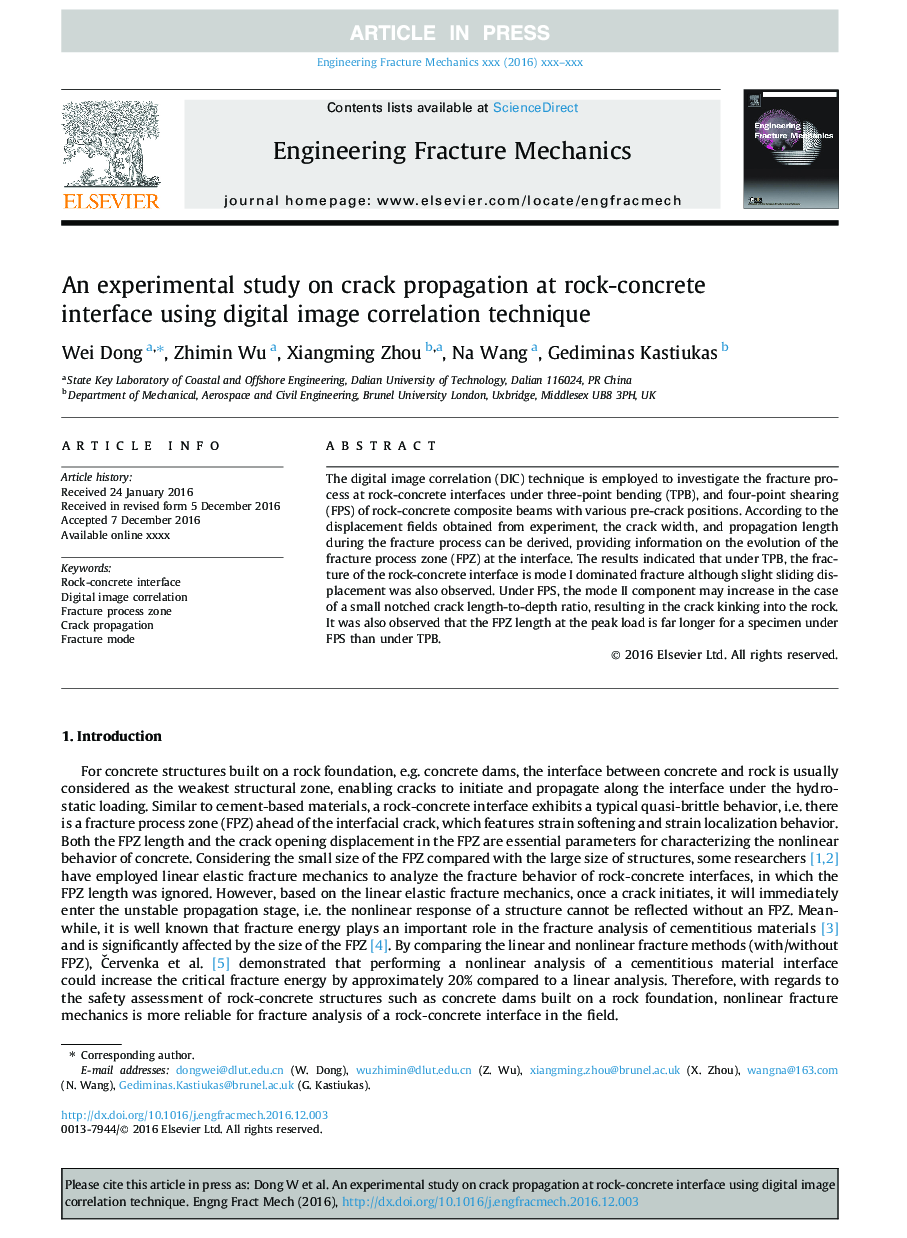| Article ID | Journal | Published Year | Pages | File Type |
|---|---|---|---|---|
| 5014083 | Engineering Fracture Mechanics | 2017 | 14 Pages |
Abstract
The digital image correlation (DIC) technique is employed to investigate the fracture process at rock-concrete interfaces under three-point bending (TPB), and four-point shearing (FPS) of rock-concrete composite beams with various pre-crack positions. According to the displacement fields obtained from experiment, the crack width, and propagation length during the fracture process can be derived, providing information on the evolution of the fracture process zone (FPZ) at the interface. The results indicated that under TPB, the fracture of the rock-concrete interface is mode I dominated fracture although slight sliding displacement was also observed. Under FPS, the mode II component may increase in the case of a small notched crack length-to-depth ratio, resulting in the crack kinking into the rock. It was also observed that the FPZ length at the peak load is far longer for a specimen under FPS than under TPB.
Related Topics
Physical Sciences and Engineering
Engineering
Mechanical Engineering
Authors
Wei Dong, Zhimin Wu, Xiangming Zhou, Na Wang, Gediminas Kastiukas,
